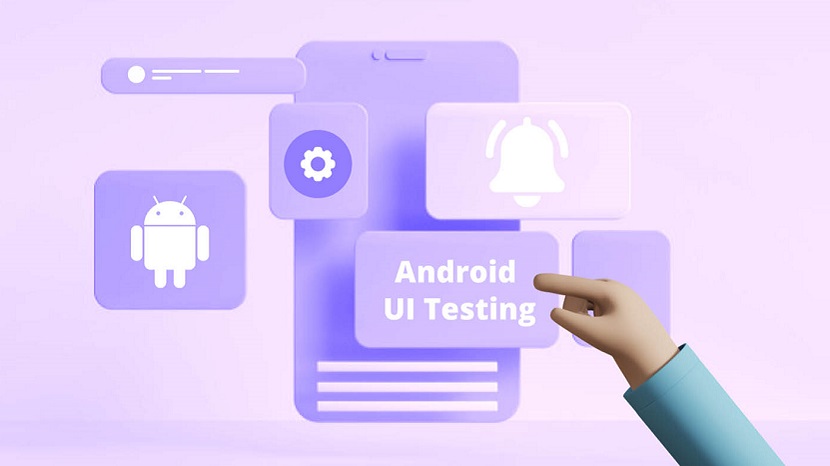Android UI Testing: Delving Deep into Interface Validation
Last updated on March 25th, 2023 by A1 True Jobs
The digital world evolves rapidly, and with this ever-changing landscape, ensuring that applications remain functional and user-friendly is crucial. Testing is pivotal in ensuring that software applications meet specified requirements and function seamlessly across different devices. When it comes to Android applications, this is no different.
Android UI Testing: More than Just Skin Deep
At the heart of every mobile application lies its User Interface (UI). The UI bridges the application and the user, making it essential for functionality and user experience. Android UI Testing is specifically tailored to verify that the UI of an Android application works flawlessly.
The Significance of UI Testing
Why is there such emphasis on UI testing? Simple. Imagine launching an app only to find that buttons are unresponsive, the layout isn't rendering correctly on certain devices, or worse yet, crashing on specific user actions. It's about more than just aesthetics; it's about ensuring a seamless user experience. Ensuring every UI element works correctly on all targeted devices and resolutions is paramount.
Why is there such emphasis on UI testing? Here are several compelling reasons:
- User Experience (UX) Enhancement: At the forefront is the user experience. A responsive, intuitive, and bug-free interface leads to a positive UX. Any discrepancies in the UI can lead to user frustration, abandonment, or negative reviews.
- Brand Perception: A smooth and glitch-free UI is often seen as a reflection of the brand's commitment to quality. Conversely, a malfunctioning interface can tarnish a company's reputation, suggesting a lack of attention to detail.
- Cost-Effective in the Long Run: Detecting and fixing UI issues during testing is significantly cheaper than post-deployment. Addressing issues after an app is live can result in additional costs like hotfix deployments, customer support overheads, and potential loss of user base.
- Shorter Time to Market: With systematic UI testing, potential issues are identified and addressed promptly. This reduces the back-and-forth between the development and testing teams, expediting the release cycle.
- Ensuring Consistency across Devices: Android, as a platform, is fragmented with numerous devices, screen sizes, and resolutions. UI testing ensures the application looks and functions uniformly across the vast Android ecosystem.
- Increased Revenue and Conversion Rates: For e-commerce and other monetized apps, a functional UI directly impacts conversion rates. Any hindrance in the user's path, like a non-responsive button at a crucial juncture, can lead to abandoned carts or lost sales.
- Support for Regular Updates and Iterations: As apps receive updates, new features, or design overhauls, UI testing ensures that existing functionalities remain intact and new additions seamlessly integrate with the current interface.
- Aids in Compliance with Accessibility Standards: A good UI is accessible to all, including people with disabilities. UI testing ensures the app adheres to accessibility guidelines, making it usable for everyone.
A thorough UI test is an investment in the application's future. Ensuring that every UI element works correctly on all targeted devices and resolutions isn't a luxury; it's necessary.
The How-to of Android UI Testing
The process is relatively straightforward for those unfamiliar with how to embark on this journey.
- Set Up Your Testing Environment: Before diving in, you must set up your Android testing environment. This entails getting the Android SDK and setting up emulators or physical devices for testing.
- Inspect Elements On Android: To validate individual UI components, testers can utilize tools to 'inspect element android.' This aids in understanding the properties and states of UI elements, a fundamental step before you can automate tests.
- Write Your Test Cases: Using the Android testing framework, one can craft both instrumentation tests (that run on a device) and local unit tests (that run on your machine).
- Automate Your UI Tests: With tools like Espresso and UI Automator, one can automate Android UI testing, simulating user interactions and verifying UI states in response. This is especially helpful for regression testing, ensuring that new code changes haven't disrupted existing functionalities.
Best Practices to Uphold
To ensure the effectiveness of your UI testing efforts, some practices are essential.
- Always Test On Real Devices: Emulators can only simulate so much. Real devices often present unique challenges and scenarios that emulators might not capture.
- Stay Updated: With Android OS versions regularly rolling out, updating test cases and adapting to the changing environment is essential.
- Design Tests For Varying Conditions: Users might operate the app under various network conditions or device orientations. Make sure your tests capture these scenarios.
- Prioritize Critical Paths: Identify and prioritize your application's most common user journeys. These paths should be tested rigorously, ensuring that main functionalities are always operational and bug-free.
- Implement Continuous Integration: Incorporate your UI tests into a continuous integration (CI) pipeline. This ensures that every code change or addition undergoes thorough testing automatically, highlighting issues immediately.
- Seek Feedback And Iterate: Besides automated tests, take user feedback seriously. Users might report issues or inconsistencies that weren't captured during testing. Use this feedback to refine and improve your tests.
By embracing these best practices, testers can ensure their Android UI tests are effective and reflect real-world usage and potential issues.
Drawing to a Close
Android UI testing is more than just a procedure; it's a commitment to delivering quality applications. As the first point of contact between the user and the application, the UI ensures consistent and optimal performance. By harnessing the power of user interface testing tools like HeadSpin and upholding best practices, organizations can ensure their applications' stability and affirm their commitment to user satisfaction.
Disclaimer : The original content is Android UI Testing: Delving Deep into Interface Validation and owner ( RGB Web Tech ) reserved rights for content

